
오, 그 끔찍한 구역질 – 녹색 담즙에서 소화되지 않은 저녁 식사, 우리가 생각하고 싶지 않은 것에 이르기까지 모든 것을 업 척합니다. 구토가 수의사를 방문하거나 집에서 치료할 수 있을 만큼 심각한지 어떻게 알 수 있습니까? 그럼에도 불구하고 강아지가 토하는 이유는 무엇입니까?
구토는 일반적으로 위벽의 염증을 나타내는 위염과 관련이 있습니다.
급성 위염은 강아지가 하루나 이틀 동안 구토를 한 번 하거나 계속 반복하게 합니다. 원인은 일반적으로 상한 음식, 쓰레기, 고양이 배설물, 뼈, 식물, 풀, 곰팡이, 균류, 장난감, 양말, 속옷 및 기타 의심스러운 품목의 섭취를 포함하는 일종의 무분별한 식이 요법입니다.
다행히 급성 위염이 있는 대부분의 개는 수의학적 치료 없이 회복됩니다. 그러나 계속되는 구토는 탈수, 우울증 또는 혼수, 구토 또는 대변의 혈액, 복통, 식욕 상실 또는 의료 치료가 필요한 기타 합병증을 유발할 수 있습니다. 반복적으로 토하거나 물을 참지 못하는 개는 수의사의 진찰을 받아야 합니다.
만성 위염은 1~2주 이상 지속되는 간헐적 구토를 말합니다. 처방 및 비처방약, 감염, 이물질, 다양한 송곳니 질병 또는 장기간 알레르기 항원에 대한 노출이 근본 원인이 될 수 있습니다. 만성 구토는 소화 및 영양소 흡수를 방해합니다. 이 문제가 있는 개는 까다로워지고 에너지가 부족하며 둔하고 건조하며 품질이 떨어지는 털을 개발할 수 있습니다. 만성 위장 문제는 자가 교정되는 경우가 거의 없으므로 2주 이상 지속되는 간헐적 구토는 초기 단계에서 문제를 해결하는 데 도움이 되도록 수의사에게 조사를 받아야 합니다.
개는 메스꺼움을 느끼고 토하려고 하면 침을 흘리고 입술을 핥고 과도하게 삼키고 고개를 숙이고 걱정스러운 표정을 짓는 경우가 많습니다. 많은 개들이 구토를 하려고 할 때 주인을 찾거나 돌아서기 때문에 보호자에게 애완동물을 더 나은 곳으로 옮기라는 신호를 보낼 수 있습니다! 시간이 지나면 개가 피해를 최소화하는 곳에 토하도록 훈련할 수 있습니다. 내 래브라도 리트리버인 Chloe는 풀, 내장 고기 또는 양 어깨뼈를 먹은 후 가끔 구토를 합니다. 그녀는 보통 뒷마당 잔디밭에 도착하기 위해 제 시간에 개 문 밖으로 달려갑니다.
아직 반려견을 위한 건강 수첩을 보관하지 않았다면 지금 기본 정보부터 시작하세요. 개가 구토를 했다면, 무슨 일이 있었는지, 언제, 무엇을 먹었는지, 무슨 일이 일어났는지, 먹은 지 얼마나 지났는지, 그리고 다음에 일어난 일을 기록하십시오. 토한 물질의 양, 구토의 농도(음식, 액체, 거품 등), 구토의 색, 구토 빈도(날짜와 시간 참고), 강아지의 식욕, 태도, 외모, 그리고 일반적인 건강. 사진을 찍을 수 있으면 사진을 찍을 수 있습니다.
반려동물이 만성 위염에 걸리면 이 기록이 수의사가 정확한 진단을 내리는 데 도움이 됩니다. 개가 특정 음식이나 간식에 민감한 경우, 서면 및 시각적 기록이 연관성을 찾는 데 도움이 됩니다.
일부 개는 위장이 너무 오랫동안 비어 있을 때 구토를 하는데, 아마도 그곳에 축적된 위산의 자극 때문일 수 있습니다. 이것은 일반적으로 빈 배 증후군 또는 더 공식적으로는 담즙성 구토 증후군이라고 합니다. 감염된 개는 보통 이른 아침 시간에 담즙과 거품을 토하지만 그 외에는 완전히 정상입니다. 취침 직전에 간단한 식사를 제공하면 대개 문제가 해결됩니다.
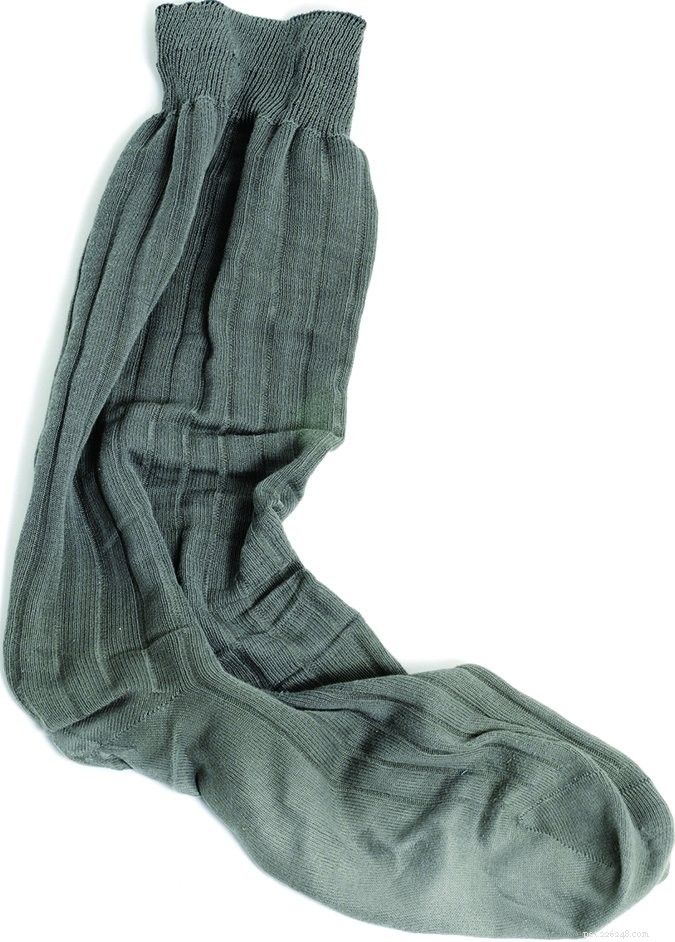
더 자주 식사를 하는 것이 도움이 되지 않는다면, 원인은 이물일 수 있습니다. 이는 개가 삼키는 것이 소화 시스템을 통과하지 못하는 것을 총칭하는 말입니다. 위에 너무 오래 머무르는 것은 자극을 유발하고 특히 위가 비어 있을 때 구토를 유발할 수 있습니다.
개가 처음부터 삼키지 말았어야 하는 것을 토하고 증거가 무슨 일이 일어났는지 설명할 때 안도감을 줍니다. 그러나 때때로 그것은 미스터리입니다. 특히 X-레이와 초음파 검사가 개의 뱃속에 있는 모든 것을 드러내지 않을 때 그렇습니다.
2002년 버지니아주 McGaheysville의 Lori Curry는 그녀의 1살짜리 Shetland Sheepdog인 Race가 왜 매일 아침 새벽 3시에 토했는지 이해할 수 없었습니다. 그녀는 "하지만 구토는 한 달 이상 계속되었습니다."라고 회상합니다.
Curry의 수면을 방해하는 것 외에도 이전에 잘 훈련된 Race는 거실에서 사고를 일으키기 시작했습니다.
도움을 받기 위해 Curry는 송곳니 영양 포럼을 찾았고 WDJ 기고자 Mary Straus는 이물질을 삼키는 것을 포함하여 문제가 무엇인지에 대한 아이디어로 답변했습니다.
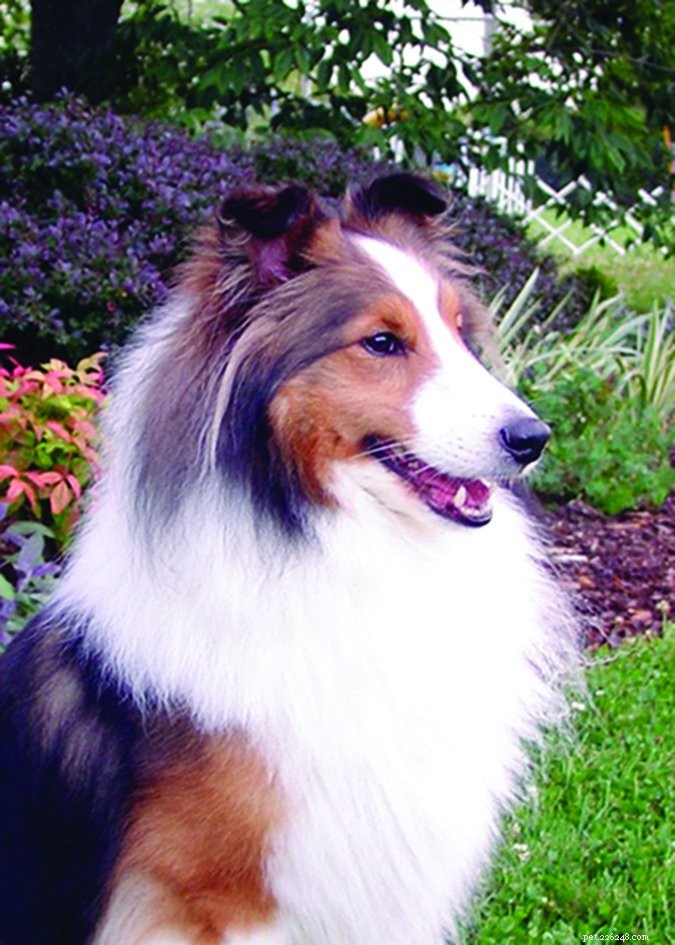
초음파 검사에서 결론이 나지 않은 후, Race는 식도와 위의 육안 검사인 내시경 검사를 받기로 일정이 잡혔습니다.
Curry는 "약속을 위해 Race를 데려왔습니다. 그리고 로비에서 만나기를 기다리는 동안 그는 매우 끈적끈적하고 아주 낡고 얇은 나일론 양말을 던졌습니다!"라고 말합니다.
문제가 해결되고 Race는 다시 집에서 훈련을 받고 밤새 잠을 잤습니다.
2014년, 위스콘신 주 나쇼타의 클라이드 설레스에 속한 6세 골든 리트리버 퀴즈는 구충 치료를 받았습니다. 거의 동시에 그녀는 간헐적인 설사를 했고 공복에 담즙을 토하기 시작했습니다. 처방약은 개의 위장을 상하게 할 수 있지만 이러한 증상은 일반적으로 프로토콜이 종료된 후 몇 주 동안 지속되지 않습니다.
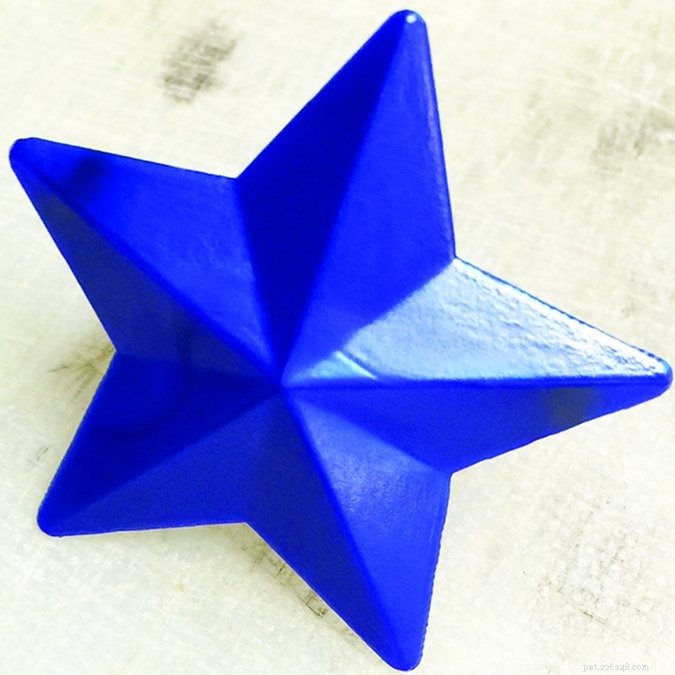
“8시간 이상 위가 비어 있을 때마다 담즙 구토가 반복되었습니다.”라고 Surles는 말합니다. “식욕이 좋았고 구토 직후에 먹었어요. 그러나 그녀는 확실히 평소처럼 기분이 좋지 않았고, 그녀의 코트는 칙칙하고 건조했습니다.” 위장을 가라앉히는 약물, 처방식이 요법, 엑스레이, 실험실 테스트 및 초음파 검사에도 불구하고 Quiz는 계속 토하고 없었습니다. 한 사람은 그 이유를 알고 있었습니다. Mary Straus는 Surles에게 내시경 검사 일정을 잡으라고 권했고, 그 검사에서 거의 3개월 전에 Quiz가 삼킨 컵케이크, 포장지 등의 먹을 수 없는 플라스틱 장식이 밝혀졌습니다. 내시경 중에 제거했는데 그 이후로 퀴즈는 괜찮습니다. "이렇게 행복하고 안도한 적이 없었습니다."라고 Surles는 말합니다.
모든 음식이 모든 개에게 맞는 것은 아니며 음식 민감성은 위장 장애를 유발할 수 있습니다. 문제가 되는 음식에 반복적으로 노출되면 위와 장에 만성 염증이 생깁니다. 이것이 반려견의 문제일 수 있다고 생각되면 다른 재료가 포함된 음식으로 바꾸고, 반려견의 저녁 식사에 소화 효소를 추가하고, 프로바이오틱 보충제를 제공하고, 다양한 브랜드 또는 유형의 음식을 실험해 보십시오.
밀 및 기타 곡물은 콩 및 기타 콩과 식물과 함께 개의 소화 불량에 기여할 수 있습니다. 라벨을 비교할 때 동물성 단백질을 먼저 나열한 식품을 찾으십시오. 많은 소유자와 수의사가 전환 후 개에서 개선된 소화 및 기타 건강상의 이점을 보고하기 때문에 곡물 및 콩이 없는 식품이 인기를 얻고 있습니다.
건조 식품에서 통조림 식품으로 또는 날것 또는 조리된 신선 식품으로 전환하거나 개선된 재료로 업그레이드하면 차이가 생길 수 있습니다. WDJ 확인 추천을 위한 건조 및 통조림 식품의 연간 등급. 집에서 만든 식단을 먹이면 개가 민감할 수 있는 곡물 및 기타 재료를 쉽게 피할 수 있습니다. Mary Straus(WDJ)의 "간단한 집에서 준비한 개 사료" 참조 2012년 7월)를 참조하십시오. 상업적으로 준비된 생식을 공급하는 경우 Karen Becker, Steve Brown 및 Mary Straus의 "상업용 생식 산업 현황"(2015년 9월)을 참조하십시오.
건조한 음식은 위장의 수분을 흡수하여 크기가 팽창하고 역류를 유발하기 때문에 구토를 유발할 수 있습니다. 건사료를 먹이기 전에 담그거나 통조림 식품과 혼합하면 도움이 될 수 있습니다.
순환 다이어트는 문제 성분을 식별하는 데 도움이 될 수 있습니다. 순환 다이어트에서는 월요일에 닭고기, 화요일에 쇠고기, 수요일에 양고기, 목요일에 연어와 같은 음식을 반복하기 전에 4~5일 동안 매일 다른 유형 또는 가족 음식을 먹입니다. 월요일은 계란이 닭에서 나오기 때문에 유일한 날입니다. 연어 기름은 목요일에만 줄 수 있습니다. 음식을 반복하기 전에 4~5일을 기다리면 신체가 더 이상 증상을 유발하지 않도록 음식을 제거할 충분한 시간을 주는 것으로 생각됩니다.
시중에 판매되는 반려동물 사료를 급여하면서 좋은 회전식 다이어트 테스트를 수행하는 것은 사실상 불가능하기 때문에(겹치는 재료가 너무 많습니다) 일부 애견 애호가들은 한 달 정도 동안 간단한 메뉴를 준비합니다. 이를 위해서는 성분과 개의 반응을 주의 깊게 추적해야 합니다. 최대 몇 주 동안 제한된 식단을 먹이는 것은 성견에게 안전하지만 성장하는 강아지에게는 안전하지 않습니다.
식이 제거 실험은 개가 먹어본 모든 식품 성분을 제거하고 개가 한 번도 경험하지 못한 식품 성분으로 대체함으로써 다른 접근 방식을 취합니다. WDJ 2011년 4월호의 "음식 제거 실험:가치 있는 도구(올바른 경우)"에 설명된 대로 , 유효한 음식 제거 실험은 제거, 도전 및 도발의 세 단계로 구성됩니다.
첫 번째("제거") 단계에서 주인은 꿩과 보리 또는 토끼와 아마란스와 같이 개가 한 번도 먹어본 적이 없는 단일 단백질 공급원과 단일 탄수화물 공급원을 식별하고 선택합니다. 개에게는 이 두 가지 재료만 먹이며 남은 음식, 뼈, 씹는 음식, 간식 또는 보충제는 허용되지 않습니다. 개가 8주에서 12주 동안 구토를 하거나 소화 장애의 다른 징후를 보이지 않는다면, 이 두 성분은 계속해서 먹여도 안전할 것입니다. 그러나 개가 고통을 나타내면 다른 새로운 단백질과 다른 새로운 곡물이 포함된 식단을 사용하여 새로운 시도가 시작됩니다. (이 두 번의 시도 후에도 개선이 보이지 않는다면 문제는 아마도 음식 알레르기와 관련이 없을 것입니다.)
많은 사람들은 개가 두 가지 새로운 성분의 제거 식단을 개선하면 실험을 중단합니다. 그러나 개의 이전 식단에 증상을 유발하는 성분이 있음을 증명하려면 실험의 두 번째("도전") 단계를 수행해야 합니다. 개에게 이전에 먹였던 음식이 무엇이든 먹이기를 다시 시작하고 일주일 이내에 이전 식단이 다시 구토나 다른 증상을 유발하는지 확인하십시오.
세 번째("도발") 단계에서는 효과적인 식단(개의 증상을 유발하지 않는 새로운 단백질과 새로운 탄수화물로 구성됨)을 먹일 것입니다. d 하나의 새로운 성분을 추가합니다. 개가 증상을 나타내면 해당 성분을 제거하고 다른 것을 시도하십시오. 결국에는 반려견에게 맞는 다양한 재료를 갖게 되며 어떤 음식이 문제를 유발하는지 알게 될 것입니다.
WDJ에 명시된 대로 의 2011년 기사, “재미있는 프로젝트가 아니다. 헌신, 특별한 관찰, 그리고 몇 주 동안 개의 환경에 대한 완전한 통제가 필요합니다. 그러나 개가 알레르기가 있는 성분을 식별하면 해당 성분을 먹는 것을 단순히 방지할 수 있고 알레르기의 불편한 증상과 강아지를 더 편안하게 만드는 데 필요한 잠재적으로 위험한 치료를 피할 수 있습니다.”
무엇을 먹든 개의 밥그릇과 물그릇을 깨끗하게 유지하세요. 개가 플라스틱의 화학 물질에 민감한 경우를 대비하여 플라스틱 서빙 그릇에서 세라믹 또는 스테인리스 스틸로 바꾸는 것을 고려하십시오.
개의 구토에 대한 일반적인 이유 중 하나는 너무 많이 또는 너무 빨리 먹는 것입니다. 차우하운드가 저녁 식사를 들이마시면 다음 전략을 시도하십시오.
강아지가 위험한 것을 먹거나 노출된 후 구토를 한다면 시간이 관건이므로 즉시 동물병원에 가세요.
언급한 바와 같이 대부분의 급성 위염은 의학적 개입 없이 저절로 해결됩니다. 밝고, 기민하고, 정상으로 보이고 행동하는 개의 급성 위염을 치료하기 위한 6가지 비의학적 단계는 다음과 같습니다.
개가 계속 토하는 경우 수의사에게 알리는 것 외에도 다음과 같은 경우 도움을 요청할 준비를 하십시오.
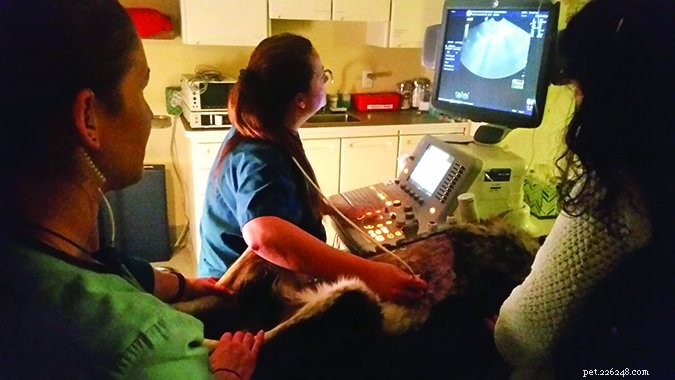
If medical care is needed, your veterinarian may take an X-ray or do an ultrasound in an effort to discover what your dog might have swallowed. Blood tests may be useful to help rule out other causes such as pancreatitis or acute kidney failure. Surgery may be required to remove an object that blocks the intestines or a large object in the stomach, such as Gorilla Glue, which swells to a large mass after ingestion.
If no cause is discovered, you may need to consult a specialist for an endoscopy, where a tube is inserted through your dog’s mouth and esophagus into the stomach. Small objects in the stomach can be removed with the endoscope. If no obvious cause is found during endoscopy, a biopsy of the stomach lining can be taken to provide additional information.
Your dog might be treated with gastrointestinal protectants such as sucralfate (Carafate), an anti-ulcer medication; with anti-emetic or anti-vomiting medications such as metoclopramide (Reglan or maxolon), H2 (histamine-2) receptor antagonists such as famotidine (Pepcid) or ranitidine (Zantac), which are used to reduce stomach acid; or proton pump inhibitors such as omeprazolie (Prilosec or Losec), which are used in cases of severe stomach ulceration.
Veterinary exams, lab work, X-rays, ultrasound tests, endoscopies, and surgery are expensive, so we do what we can to avoid them. Still, dogs will be dogs. Let’s say you just saw your dog swallow a sock. What should you do?
Several online forums and blogs give detailed directions for making dogs vomit with emetic agents such as hydrogen peroxide or by using other methods. However, inducing vomiting is not always the best option. We recommend consulting your veterinarian or the ASPCA’s Animal Poison Control Center (888-426-4435) before taking such a step.
Note that some widely recommended methods are potentially harmful. Syrup of ipecac, which for decades was given to pets and people, is no longer considered the standard of medical care because of its toxic effect on the heart and circulatory system and because it tends to result in prolonged vomiting, lethargy, and diarrhea. Sticking your finger down a pet’s throat to stimulate a gag reflex (called digital vomiting induction) can result in injury to both you and your pet. Soaps, mustard powder, and table salt are not reliable, and their potential toxicity is a concern.
Instead, follow these instructions from the ASPCA’s Animal Poison Control Center. Read through them now so you understand the basic procedure, keep a copy with your dog’s health notebook, keep the necessary supplies on hand, and review the instructions again before calling for help.
Of course, if you are concerned, don’t wait for a veterinary receptionist to insist that you bring your dog in; they don’t know your dog like you do. A case in point is Lori Curry’s other Sheltie, Raz, who was famous for eating paper money, a utility glove that he passed whole, and a dryer sheet that made him sick until he vomited it up a week later. When he was 14, Raz grabbed and ate a raw corn cob from the back of a kitchen counter. Curry called an emergency clinic. “They recommended taking a wait-and-see approach,” she says.
As the veterinarian predicted, Raz passed most of the corn cob safely. But five days later, he suddenly declined, and despite thousands of dollars for surgery and round-the-clock emergency care, he almost died. “Corn cobs are dangerous, and when another time my dogs got into corn cobs, I insisted on inducing vomiting. I don’t take a wait-and-see approach for that problem anymore!” Curry says.
All kinds of illnesses trigger gastritis, so vomiting is never a defining symptom by itself. Here are several conditions that cause vomiting in dogs.
Also known as gastric dilation-volvulus or torsion, bloat is a serious condition affecting all types of dogs but especially large breeds with deep chests like Akitas, Great Danes, German Shepherd Dogs, and Doberman Pinschers. Dogs at greatest risk are those who rapidly eat a single large meal once daily – or dogs who break into food supplies and overeat. Gastric distention occurs as the stomach fills, and physical activity shortly after eating can cause the stomach to twist, which closes the esophagus and leaves the dog unable to expel gas or excess food by vomiting or belching. Symptoms include a distended abdomen, pain, drooling, and repeated, unproductive attempts to vomit.
Bloat is a medical emergency of the highest order; immediate veterinary attention is essential.
Although roundworms tend to cause diarrhea rather than vomiting, if the infection is severe a puppy may vomit live worms. Other parasitic infestations can contribute to gastrointestinal symptoms.
Giardia , an intestinal parasite caused by a single-celled organism, affects an estimated 11 percent of all pets and up to 50 percent of puppies. It is easily transmitted through contaminated food, water, or soil, and through pet-to-pet contact. Giardia infections cause diarrhea and vomiting, although a dog may go without obvious symptoms for long periods. Coccidia , another single-celled organism that infects the small intestine, can produce vomiting, watery stools, bloody diarrhea, fever, depression, and life-threatening dehydration.
Multiple fecal parasite and giardia tests may be needed before these causes can be identified or ruled out because “false negative” results can occur for various reasons. Empirical treatment with fenbendazole (Panacur) for giardia and most intestinal worms, or diluted Ponazuril for coccidia, may be tried to see if symptoms improve.
Inflammation of the pancreas can cause diarrhea, vomiting, abdominal pain, and a loss of appetite. Because its symptoms are shared by so many other canine illnesses, pancreatitis can be difficult to diagnose, though there are now blood tests for canine pancreas-specific lipase that are more accurate for diagnosing both acute and chronic pancreatitis. In cases of chronic gastritis, your vet will look for underlying causes, including pancreatitis.
This is another hard-to-diagnose digestive illness. In IBD, inflammatory cells take over the intestine, leading to scar tissue throughout the digestive system’s lining and chronic vomiting, diarrhea, and weight loss.
This can trigger the vomiting of bile, which tends to be thin, clear, yellow, or brown and sometimes frothy. The stool can become ribbon-like and have an orange tint. A bile acid test can confirm the diagnosis.
Caused by adrenal insufficiency, Addison’s can produce vomiting, diarrhea, fatigue, loss of appetite, and general weakness that tends to come and go over time. While Addison’s is a treatable condition, an Addisonian crisis in which the patient goes into shock can be fatal. See “Detecting Addison’s Disease in Your Dog” (WDJ October 2011) for information on Addison’s.
This is an umbrella term for any inflammatory or infectious disease of the visceral lining (peritoneum) of the abdomen. It usually involves most of the abdominal organs (liver, stomach, intestines, spleen, kidney, reproductive organs, and bladder). Peritonitis results in the accumulation of fluid within the abdominal cavity. It can be associated with abdominal trauma, abdominal surgery, or pancreatitis. Its symptoms include vomiting, diarrhea, weakness, fever, loss of appetite, abdominal distention, and abdominal pain.
An infection of the uterus, pyometra is most common in intact females who have never been pregnant. Most are age six or older. The infection occurs after a heat cycle that does not result in pregnancy. Symptoms can include vomiting, lethargy, depression, fever, lack of appetite, excessive thirst, frequent urination, a distended abdomen (due to the enlarging uterus), vaginal discharge, excessive licking at the area, and weakness in the hind legs. Some spayed females may develop “stump pyometra” from a remnant of the uterus left behind.
This condition is unusual in dogs, but it can be frightening, expensive, messy, and sometimes fatal. The cause of hemorrhagic gastroenteritis remains unknown, but its symptoms, which can affect any dog at any age, are dramatic – slimy vomit followed by blood in the vomit and bloody diarrhea. If your dog develops these symptoms, seek veterinary treatment at once. See “Hemorrhagic Gastroenteritis in Dogs” (WDJ July 2009) for details about identifying and treating hemorrhagic gastroenteritis.
In addition to illnesses and diseases, there are a number of things that dogs can ingest or be exposed to that can cause acute or chronic gastritis.
All of these can have numerous side effects, including vomiting. The same is true for vitamin D poisoning, which can occur from supplementing too much vitamin D3 (see “Vitamin D for Dogs,” WDJ July 2016) or from ingesting rodenticides (drugs that kill rats and mice) that contain vitamin D3.
Exposure to chemical irritants can cause vomiting, as can heavy metal poisoning and other chemical exposures. Never induce vomiting when a caustic substance was swallowed. Describe the symptoms to your veterinarian and provide a list of medications and supplements your dog has been taking. In cases of rodenticide poisoning or chemical exposure, contact your vet or the ASPCA’s Animal Poison Control Center at once.
Dogs are famous for eating grass and throwing up, and most are none the worse for wear. But an alarming number of plants are toxic to dogs. See the ASPCA’s list of nearly 500 toxic plants.
The most common plants that are problematic for dogs are the autumn crocus (Colchicum autumnale ), azalea (Azalea nudiflora ), cyclamen (Cylamen spp. ), dumbcane (Dieffenbachia ), hemlock (Conium maculatum , which is a poisonous plant and not related to the coniferous hemlock tree), English ivy (Hedera helix ), mistletoe (Viscum album ), oleander (Nerium oleander ), thorn apple or jimsonweed (Datura stramonium ), yew (Taxus spp. ), and any mushroom or toadstool that you cannot identify as safe. Avoid planting any of these near where your dog will walk or play.
Pythiosis is an infectious disease caused by a fungus-like organism, Pythiuminsidiosum , that inhabits wetlands, ponds, and swamps. Dogs can develop pythiosis after swimming in or ingesting contaminated water, and their key symptom is vomiting. While most cases occur near the Gulf of Mexico, inland dogs have developed it, too. Young male retrievers are especially at risk if they retrieve and then chew on sticks from infected water.
Cyanobacteria (also known as blue-green algae) are microscopic bacteria found in freshwater lakes, streams, ponds, and brackish water that can cause vomiting in dogs. The bacteria colonize to form “blooms” that give water a blue-green or “pea soup” appearance. Algal concentrations are most abundant during hot summer weather. While most blue-green algae blooms are not toxic, it is impossible to determine the presence of toxins without testing. Therefore, all algae blooms should be considered potentially toxic and avoided because even small exposures, such a few mouthfuls of algae-contaminated water, can be fatal.
It’s encouraging to know that most dogs who vomit have acute rather than chronic gastritis, that its cause is probably benign, and that most vomiting dogs recover on their own without medical treatment.
But sometimes vomiting is a serious symptom, and it’s worth studying its possible causes so that if and when your dog throws up, you’ll have a better idea of how to respond in order to keep your best friend healthy.
CJ Puotinen is author of The Encyclopedia of Natural Pet Care and other books.
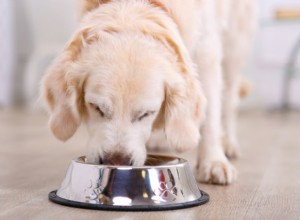
핵심 요약 개 구토는 여러 가지의 결과일 수 있습니다. 나쁜 음식에서 바이러스, 세균 감염, 소화 불량, 기생충, 알레르기 등에 이르기까지. 2차 증상을 주시하고 주저하지 말고 수의사의 진료를 받아 신속한 진단과 올바른 치료를 받으시기 바랍니다. 개는 에너지가 넘치고 열성적으로 먹을 수 있으며, 때로는 위가 한 번에 처리할 수 있는 것보다 더 많은 양을 먹고 토하기 시작합니다. 다른 경우에는 개가 유독한 것을 먹었거나 질병에 걸렸을 수 있습니다. 둘 다 수의학적 치료가 필요합니다. 많은 개 소유자에게 구토는 진단하기 어려울 수 있

개와 아이들은 하늘이 맺은 짝이지만 유대가 형성되는 데는 시간이 걸릴 수 있습니다. 마법이 즉시 일어날 것이라고 기대하지 마십시오. 아기가 오기 전에 기본 명령을 가르치거나 복습하십시오. 아기가 집에 오기 전에 강아지에게 새로운 장비, 새로운 일상, 새로운 냄새를 알려주세요. 이 모든 새로운 것들과 차분하고 긍정적인 관계를 갖도록 격려하십시오. 아기와 강아지를 소개할 때 경계를 유지하고 개가 (정중하게) 냄새를 맡게 하십시오. 개와 아기가 함께 있을 때는 항상 감독하세요. 새로운 아기를 준비하는 것은 그 자체로